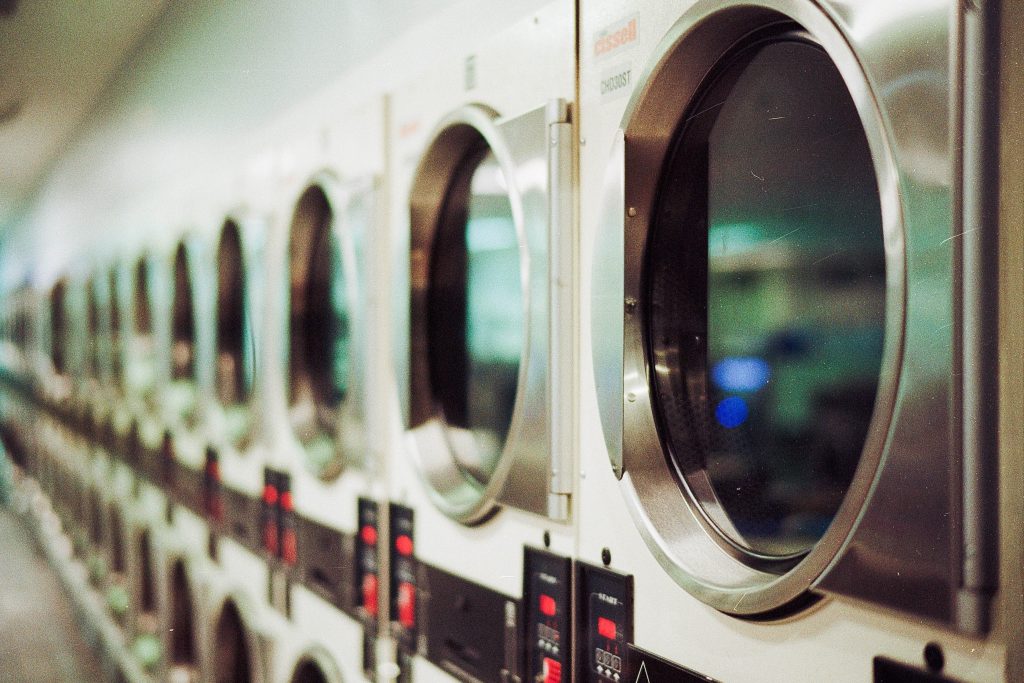1. Leverages an existing hashtag.
Social natives know that #LaundyNight and #LaundryDay have been around for years. It is the tag of choice for digerati who post selfies in laundromats or apartment building laundrettes. Tide has made a wise choice to jump on a hashtag that already had a positive track record but wasn’t “owned” by anyone. Using Tide’s clout, they were able to insert themselves into the conversation in a way that is relevant, fun, and without being intrusive.
Marketing and communications professionals often attempt to design new hashtags in efforts to own the entire conversation. Tide has shown that you don’t need to own the entire conversation if your messaging effectively engages with the audience already creating content around that existing hashtag.
2. It mixes celebrity reach with user generated content.
The campaign over the airwaves is clearly driven by celebrities. The first commercial that started the campaign featured football players, actors, and musicians. https://www.youtube.com/embed/Z2Q8A26c7qw
The celebrity engagement carries over to social. Each public figure featured in the advertisement also posted to their personal feed and were shared or retweeted by the Tide account.
” .@NFL….*?drop* #laundrynight. Can I get a ??? @Tide #ad pic.twitter.com/HNqYEbs1PA
— Kenan Thompson (@kenanthompson) September 16, 2019
But celebrities aren’t the only people spreading the word. In an even mix of love and hate, users that world over are discussing #LaundyNight. Some are attempts to win free detergent (more on that later) while others are begging Tide to stop the campaign because of advertising saturation. Regardless, there is consistent buzz around the tag from celebs and citizens alike. Tide is quick to engage with anyone participating in the conversation across multiple social channels.
3. Creates “controversy” in a clean, fun way befitting of the brand.
The controversy of which day to wash laundry drives conversation but not scandal. It makes people talk but doesn’t bring in political or social commentary. Some brands implement “edginess” to drive conversation. Even this summer’s chicken sandwich wars ended up with a snarky edge to them. The question of #LandryNight has no clear answer. People are not emotionally invested in the night that they do laundry. This sort of “clean” controversy will not devolve into ugly conversation because it simply isn’t that important. The campaign takes everything as tongue-in-cheek, laughing at the farcical nature of it all.
4. Catch-up should be made easy.
Tide made it easy to catch up with the conversation by serving supporting digital advertising. It has become standard to boost or otherwise drive engagement with social ads. But in a brilliant step, they are also serving Adwords around #LaundryDay.

The link takes you to a landing page with the commercial embedded. This step shows an awareness of the media landscape. Though TV remains one of the channels with the highest engagement, eMarketer reports that in 2018 cord-cutting consumers grew by 32%. That trend is projected to continue growing with an expected 55 million Americans to drop cable and satellite by 2022.
5. They incentivize engagement.
Not only does Tide push people to have conversations, they incentivize it. People tweeting with the #LaundryNight hashtag were entered to win Tide Pods. The drew out participants who may not have participated otherwise. The contest was also incredibly simple. Tweet, Tide would reply if you were a winner, then send Tide a DM to claim your prizes. There should be minimal friction to participate and Tide certainly got it right.
_____
Whether you’re a multinational cleaning supply provider or a local small business, TINT helps create engaging and immersive experiences using our Experience Builder toolkit. Using TINT, you can build social-driven contests, polls, and more in just minutes with no coding required. Chat with our team of experts today and maybe your social contest will be the next buzzworthy article on the TINT blog.




